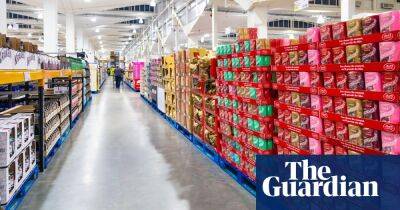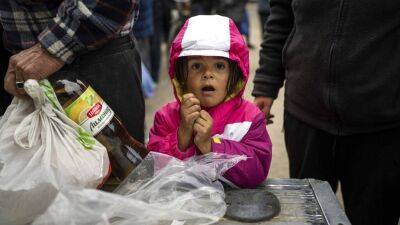‘Bring a bag and use refills’: how to cut down on plastic waste
The Big Plastic Count, an experiment led in May this year by Greenpeace and Everyday Plastic involving almost 100,000 homes, revealed that an average household throws out 66 items of single-use plastic packaging in one week – the equivalent of 3,432 items in a year. How can you shrink that mountain of plastic – and can it save you money?
Steve Hynd, at the environmental non-profit organisation City to Sea, says: “Keep all of the plastic you use in one week, and then make changes based on what you use the most. For different households, different things might pop up.”
The most common items piling up in the Big Plastic Count were fruit and vegetable packaging and snack packets.
Wendy Graham, the author of the Moral Fibres eco blog, says: “The kitchen is the hardest room in the house to reduce reliance on single-use plastic. Supermarkets don’t do nearly enough to reduce their plastic packaging, and, in many cases, buying plastic-free food isn’t affordable, or accessible.”
Rather than thinking of cutting plastic use as an “all-or-nothing” exercise, Graham says: “Focus on what you can do rather than what you can’t.”
Changing a few habits can help. “We don’t use clingfilm. Instead, we use old Tupperware tubs to store food, or cover it with plates or pan lids. We don’t buy plastic-wrapped kitchen roll either. Instead, I keep a basket of reusable cloths for mopping up spills. These are just plain old cotton cloths, or old T-shirts worn to the point of no repair and then cut up into squares,” she says.
The 5p charge on single-use plastic shopping bags introduced in 2015 has helped cut their use by as much as 97%. However, in 2019, the Environmental Investigation Agency and Greenpeace said supermarkets had sold 1.58bn “bags for life” –
Read more on theguardian.com





![Cosmos [ATOM] hub roadmap 2.0 and its Q3 2022 report](https://finance-news.co/storage/thumbs_400/img/2022/10/8/44117_1pjqz.jpg)














![Evaluating if Tron [TRX] is up for a trend reversal this week](https://finance-news.co/storage/thumbs_400/img/2022/10/8/44102_sfou.jpg)



